By Nathan N. Prefer
They knew they were coming. They had been waiting for days, expecting at any minute to be rushed to battle stations, but for days nothing much had happened. Veterans of naval battles at the Coral Sea, Guadalcanal, Leyte Gulf, and the Philippine Sea couldn’t explain it. Where were the Japanese? Even ashore at the beachhead the Fifth U.S. fleet was protecting, the Japanese Army was nowhere to be found. The Tenth U.S. Army was seeking it, moving deeper into Okinawa.
True, there had been some evidence of the enemy. A few single planes had appeared over the fleet in recent days and struck hard. On the evening of the first landings on Okinawa a Japanese kamikaze had crashed into the transport Alpine and blown two huge holes in her side, killing 16 and wounding 27. Nearby, the Achernar was both crashed and bombed by conventional attackers, losing five killed and 41 wounded.
So keyed up were the Americans that a false alarm resulted in many of the ships firing wildly at imaginary aircraft in the darkness, smoke screens being ordered, and ships attempting to evade these imaginary attackers coming dangerously close to collision.
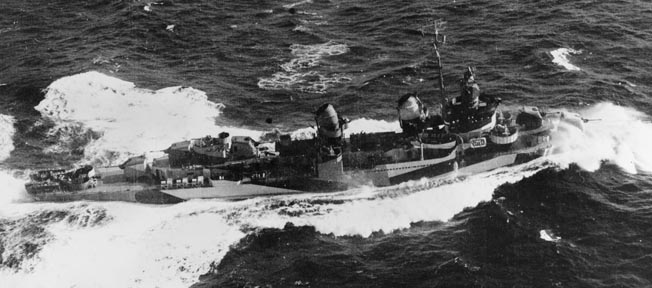
Yet, the massive enemy air attack expected by the Americans didn’t develop. Despite American intelligence reports of thousands of Japanese aircraft being hoarded in Japan for a devastating air attack on any fleet invading Okinawa, no attack developed in the opening days of the Okinawa campaign. Small raids continued to come against the invasion forces, such as the one on April 2, which sank the destroyer-transport USS Dickerson (Lt. Cmdr. R. E. Lounsbury) and damaged several transports carrying troops of the 77th Infantry Division, killing a regimental commander and several others.
To provide early warning of the expected attacks, Admiral Raymond A. Spruance, commander of the Fifth U.S. Fleet, had established “radar picket” posts some distance from the main fleet’s position. These posts, manned by one or two destroyers and/or destroyer escorts, were designed to provide early radar warnings of incoming enemy air raids against the fleet and beachhead. As the campaign developed, these radar pickets would instead become major targets for the incoming enemy attacks.
In the early days of the campaign, however, there was a weak spot in the defense in that no land-based aircraft had yet been established on Okinawa or the outlying islands of the Kerama Retto chain. This left the time just before dusk, when aircraft had to return to their carriers, with no protective air patrol over the fleet. With no night fighters yet available, the fleet was vulnerable during those final moments before full darkness.
The Japanese took advantage of this gap in the American defenses. On April 3, for example, the escort aircraft carrier USS Wake Island (Captain A.V. Magly) was struck by a crashing kamikaze that ripped a hole in her side, forcing her to return to Guam for repairs.
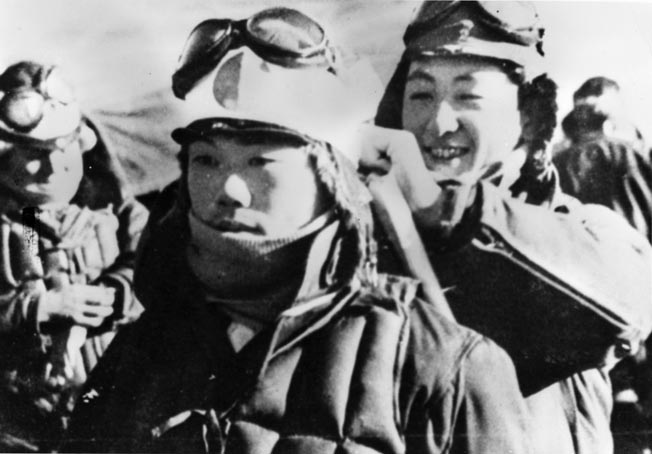
The following day the weather turned bad, which provided better protection for the U.S. fleet because Japanese planes were unable to fly. Bombing of enemy airfields on the home island of Kyushu also contributed to a relatively quiet day on April 4. The bad weather continued until the next day, keeping the Japanese grounded and giving the fleet some respite. But it was short lived.
The weather of April 4-5 had postponed, but not cancelled, Admiral Soemu Toyoda’s planned operations. A graduate of the Japanese Naval Academy, class of 1905, he had fought in the early war battles until November 1942, when he became a member of the Japanese Supreme War Council. By May 1943, Admiral Toyoda was commanding the huge Yokosuka Naval Base. Upon the death of Admiral Isoroku Yamamoto, commander in chief of the Combined Fleet, Toyoda was appointed to that position. He held that post during the Battles of the Philippine Sea and Leyte Gulf, headquartered in Tokyo.
Despite these crushing defeats, Admiral Toyoda was promoted once again—to the post of Imperial Japanese Navy chief of staff. By this time, with no fleet left to speak of, Toyoda pinned his hopes on defeating the Americans with land-based air power. His plan was named Operation Ten-Go and involved concentrating Japanese air power on Kyushu and Formosa. Although his plan called for 4,500 aircraft, by April 6, 1945, he could only count on approximately 699 planes, about half of them kamikazes.
Kamikaze or shinbu (“Divine Wind” or “Spirit Wind”) pilots were those who deliberately crashed their aircraft, often loaded with bombs and fuel, into their targets, usually American warships. The tactic had been used before, particularly during the Battle of Leyte Gulf. In the final defense of Japan itself, kamikaze planes and pilots were being held in reserve for that ultimate battle.
There were a number of kamikazes besides pilots. One-man submarines, one-man glider bombs, explosive motor boats, and human torpedoes also willingly went on suicide missions, but by far the most death and destruction was delivered by the airborne kamikaze.
The weather on April 6, 1945, had improved. The wind was from the northeast, and while it was strong enough to raise whitecaps on the ocean it did little to interfere with the ships off Okinawa. With the temperature varying between 60°F to 65°F, the morning passed quietly. In mid-afternoon, Rear Admiral Morton L. Deyo’s Task Force 54, the Gunfire and Covering Force, and Rear Admiral William H.P. Blandy’s Task Force 52, the Amphibious Support Force, were ordered to form up early and perform tactical exercises until dusk and then retire together to their night positions.
As Admiral Deyo’s ships sailed toward Okinawa, they observed a kamikaze being shot down by the Combat Air Patrol over Ie Shima. As they continued, they observed other air combat and attacks on minesweepers near the invasion beaches. Task Force 54’s night position was a circle about 12,000 yards wide in which the battleships and cruisers sailed while 4,000 yards farther out a screen of destroyers patrolled. As they turned away from Ie Shima, the destroyer USS Leutze (Lieutenant Leon Grabowsky) reported an incoming aircraft about eight miles away and heading toward Task Force 54.
The Leutze was a veteran of several campaigns. Commissioned on March 4, 1944, the ship had fought as a part of Destroyer Squadron 54 during the Battle of Surigao Strait in the Philippines and had come under kamikaze attack while covering the Leyte invasion force as a part of Task Group 77.1 of the Seventh U.S. Fleet in November 1944.
At Iwo Jima, she had been a fire support ship for the minesweepers combing the waters off the eastern beaches of the island. While doing this job, she was struck by shells from a shore battery on Mount Suribachi, which hit the starboard side of the number one smoke stack.
Her commanding officer at the time, Commander B.A. Robbins, Jr., was seriously injured and a dangerous fire started in the 40mm ammunition handling room. The ship’s executive officer, Lieutenant Grabowsky, took command and kept the supporting fire over the underwater demolition teams going, while Gunners Mates Eugene Balinski and Warren H. Gurwell fought the flames that threatened to destroy the ship. After remaining on duty the rest of the day, the ship returned to Ulithi for repairs.
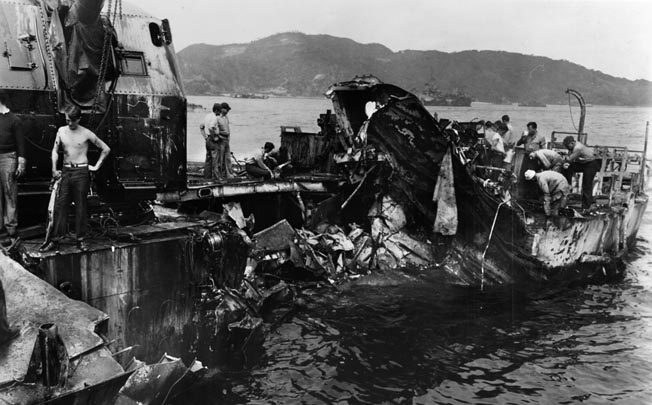
Leutze returned to battle, still under Lieutenant Grabowsky’s command. Now, on April 6, 1945, she saw additional aircraft coming against Task Force 54, and her guns opened fire. So swiftly did the Japanese planes arrive that many were spotted by ships’ lookouts before they were reported on radar. All the ships in Task Force 54 opened fire, but the incoming aircraft concentrated their attention on the Leutze and the adjoining screening destroyer USS Newcomb (Commander I.E. McMillian).
As the battle raged, an enemy aircraft came skimming across the water. Despite hits knocking off pieces of the aircraft, the pilot slammed into the Newcomb’s rear stack, rupturing the ship’s boilers. As the crew fought the fires and tried to repair the boilers a second plane came in off the starboard bow but was shot down at a distance of 6,000 yards.
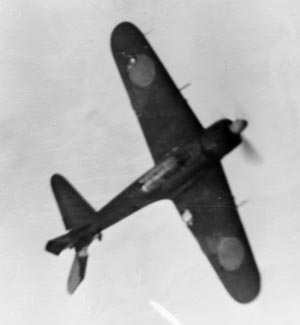
A third plane followed and crashed into the destroyer amidships, near the torpedo workshop. This explosion stopped the destroyer dead in the water. Both engine rooms were destroyed, and the after (rear) fire room was wrecked. Even as the ship was erupting with fires and explosions, a fourth kamikaze hit the Newcomb at the forward stack, showering gasoline all over the already blazing ship. From the first hit to the last barely 11 minutes had elapsed.
The Newcomb was another veteran of the Pacific War. Under Commander L.B. Cook, she had fought in the Marianas Islands operation where, together with the destroyer USS Chandler, the destroyer was credited with the sinking of the Japanese submarine I-185 in June 1944. She went on to fight during the Battle of Leyte Gulf as the flagship of Destroyer Squadron 56, which included the Luetze. There she pulled the badly damaged destroyer USS Albert W. Grant out of a barrage of friendly fire to safety. Later a kamikaze near-missed her, killing two and wounding 15. By the time she arrived at Okinawa, she had been awarded no less than five Navy Unit Commendations. Then came April 6, 1945.
Seeing the blazing destroyer, Grabowski’s Leutze moved quickly to join her stricken sister ship, using her own antiaircraft guns to protect the now defenseless vessel. Boats were swung out to pick up survivors. Everyone assumed she was sinking—everyone, that is, except the captain and crew of the Newcomb. Seeing that the crewmen were fighting to save their ship, Grabowsky risked his own ship to render aid.
Even as he did so, a fifth plane appeared and headed straight for the Newcomb. The sole remaining operable gun aboard the destroyer—her 5-inch forward gun—fired and hit the plane, blasting it onto the fantail of the Leutze, where it exploded.
Now fires raged aboard the Luetze as well. The crew fought two fires, one aboard their own ship and the other aboard the Newcomb; both ships were in serious danger of sinking. Another destroyer, the USS Beale (Commander J.B. Cochran), came up with all its fire hoses streaming water on the two struggling ships.
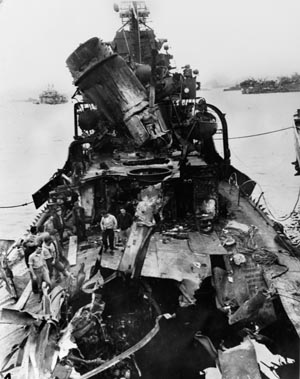
Lieutenant Grabowsky signaled, “Am pulling away. In danger of sinking,” as the Beale took over the job of helping the Newcomb. After obtaining permission, Grabowsky jettisoned his torpedoes and depth charges.
Then minesweeper USS Defense (Lt. Cmdr. Gordon Abbott), which had herself been struck by two suicide planes in the bridge structure and a 40mm antiaircraft mount behind the smokestack, took the Leutze in tow to Kerama Retto for repairs. The USS Defense was back sweeping mines five days later, having suffered 19 sailors injured.
Aboard the Newcomb, the executive officer, Lieutenant A.G. Capps, found himself trapped under a wing of one of the kamikaze planes that had hit the ship. Pulled out by crewmen, he immediately set to work to save his ship. Gunners continued firing until they were blown overboard or killed. Damage control parties fought the fires until they were burned to death. Dozens of crewmen were later cited for bravery.
By the time the fleet tug USS Tekesta arrived to tow the Newcomb to Karema Retto, she was blasted, burned, and seriously damaged with the remains of one of the kamikazes on her fantail, but still afloat.
The total cost for this one kamikaze attack was seven killed and 34 wounded aboard the Leutze and 40 killed and 24 wounded aboard the Newcomb .The Japanese lost five planes and crews, not counting those shot down before impact. And April 6, 1945, was just beginning. There were still the radar pickets well outside the screen of the main American fleet.
The USS Bush (Commander R.E. Westholm) manned Radar Picket Station Number One with partner USS Calhoun (Commander G.R. Wilson) manning Picket Post Number Two nearby. Both ships were veterans and had fought off kamikaze attacks since April 1. During the morning of April 6, several attacks came in but were beaten off by the two ships.
Shortly after noon, what was described as a “swarm” of Japanese planes directed their attacks on the two ships. A reported 40 to 60 enemy planes attacked both Radar Picket Station Number One and Radar Picket Station Number Three to the east, where the destroyer USS Cassin Young (Commander J.W. Artes, III) was stationed. Like her sister ships, the Cassin Young was a veteran, having already earned two Navy Unit Commendations and she was about to earn a third for her performance during the Okinawa campaign.
By 3 pm the USS Bush had shot down two planes and driven off two more that made runs at her. Then another plane came in low over the water. Commander Westholm opened fire with all guns, including the 5-inch main battery. The plane weaved and dodged, barely keeping above the water as it approached. It struck the Bush between the two smoke stacks amidships, and its bomb exploded in the forward engine room, killing every man there.
Two fire rooms suffered equally. A 4,000-pound engine room blower was hurled so high into the air that it knocked off the ship’s radar antenna. Flooding quickly gave the Bush a 10-degree list, but steam escaping from the fire rooms put out the fires and power was regained using an auxiliary diesel generator.
The Calhoun immediately came up to render assistance, bringing along her own combat air patrol (CAP) for protection. But en route the CAP became heavily involved with many Japanese planes and soon ran out of fuel and ammunition. Although the Bush was dead in the water the crew expected to save her, as her wounds did not appear mortal. But the Japanese had other ideas.
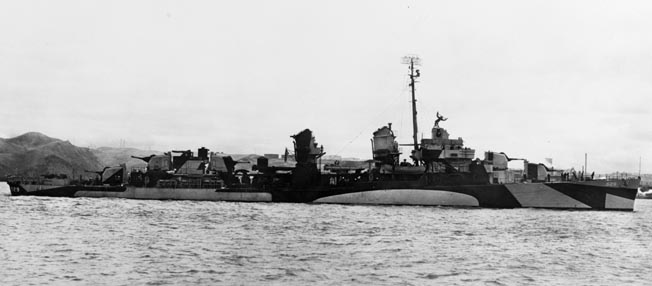
Commander Wilson ordered a support vessel, the LCS-64, to close on the USS Bush and rescue injured and wounded crewmembers. As she did so, a flight of 15 enemy planes appeared. Around 5 pmthe enemy flight split up, going for both American ships. Westholm ordered about 150 of the Bush’s crew to go overboard for protection, trailing lines for them to hold on to as the battle began. All guns that were still able to fire opened up on the new attackers.
Meanwhile, the Calhoun opened fire and shot down one enemy plane. Another was set afire by the 5-inch main battery. A third went down to the same fire.
Then, seemingly out of nowhere, a fourth enemy plane was reported off the port bow. Commander Wilson ordered a hard turn to port, but it was too late. The aircraft, already burning, hit the main deck, wiping out two gun crews. The bomb exploded in the after fire room, killing everyone there. Despite the damage, the Calhoun could still steam at about 15 knots.
Just as Commander Wilson was getting the fires under control, three more enemy planes attacked. One was shot down. A second missed and was shot down by fire from the Bush and LCS-84, which had come near. But the third hit the Calhoun at the forward fire room. The bomb destroyed both of the ships’ boilers. The destroyer was now dead in the water. A 4-by-20 foot hole had been blown below the waterline. The ship’s keel was broken. All power and communications were lost.
Immediately the experienced and well-trained crew managed to get the fires under control. Several guns were connected to the gunnery officer using improvised communications. The wounded were treated, and the torpedoes and depth charges were being thrown overboard. Just as this last process started, the sixth attack on the Calhoun began.
Five enemy planes attacked the ship from three directions. With all guns locally trained because of lack of power, it took longer for the gunners to find and fire at their targets. After about two minutes of manual operation a gunner became exhausted from this stress, and relief had to be swift.
One plane was shot down. A second was hit badly but so close that it crashed onto the destroyer, spreading burning gasoline before falling overboard. Its bomb blew another hole in the ship below the waterline. A third plane was also hit and missed the Calhoun but went on toward the Bush and smashed her between the smoke stacks, nearly cutting the destroyer in two.
The men of the Bush in the water came back aboard ship and tried to save her. It was hopeless. A fourth enemy plane then hit her on the port side, starting yet another fire and killing many wounded that were being treated in the ship’s wardroom. Still, the crew fought the fires until the ammunition below began to explode.
Commander Westholm hoped that the fires would burn themselves out, but soon the bow began to settle and there was no option left but to abandon ship, which was done shortly before the ship broke in two and sank at about 6:30 pm.
Eighty-seven officers and men died aboard the Bush, and another 42 were wounded. Landing craft support vessels rescued 246 men.
Meanwhile, Wilson’s Calhoun was still afloat and fighting for her life. Another hit on the pilothouse and port side made little impression because of the serious damage that had already crippled the ship. The support ship, LCS-64, loaded with numerous survivors, had itself been hit and had to withdraw for its own safety.
With no hope of recovering control, Commander Wilson consulted his officers and decided to abandon ship. He requested that the Cassin Young and LCS-84 search the area for Bush survivors. LCS-87 came alongside and removed the survivors of the Calhoun. She was sunk by gunfire from the Cassin Young; lost with her were one officer and 34 men. The rest of her crew—295 men including 21 wounded—were rescued.
The agony of April 6 continued, seemingly without pause. Air strikes from both Japan- and Formosa-based planes came in all day long. The destroyer escort USS Witter (Lieutenant George Herrmann) was hit, losing six men. The destroyer-transport USS Daniel T. Griffen (Lt. Cmdr. J.A. Eastwood) was hit by a kamikaze between her two forward turrets and set ablaze. Hours of firefighting put out the blaze at a cost of 13 men killed and 45 wounded, but the ship was saved.
The destroyer USS Howorth (Commander E.S. Burns) was sailing off the north coast guarding the cruiser USS St. Louis (Captain J.B. Griggs) when both came under kamikaze attack. Several planes were shot down, one barely 25 yards astern of the cruiser.
Later, the Howorth was dispatched to the aid of another injured ship. Along the way she came under attack again by two groups of four planes each. Five were splashed by her gunners. The sixth crashed into the main battery director, killing nine men and wounding 14 more. Even as her damage control parties fought to get the fires under control, a seventh plane was shot down. The Howarth managed to make Kerama Retto unaided.
The ship that the Howorth was on its way to aid, the USS Hyman (Commander R.N. Norgaard), had been attacked by four planes while on her way to a picket station off the island of Ie Shima. She shot down three of her attackers, but the fourth crashed into the ship between the stacks at the torpedo tubes. A tremendous explosion, probably the result of torpedoes detonating, flooded the forward engine room, which had to be abandoned.
The destroyer was so severely damaged that the destroyer USS Rooks (Commander J.A. McGoldrick) was detailed to escort her to Kerama Retto. On the way, the ships were again attacked but not hit.
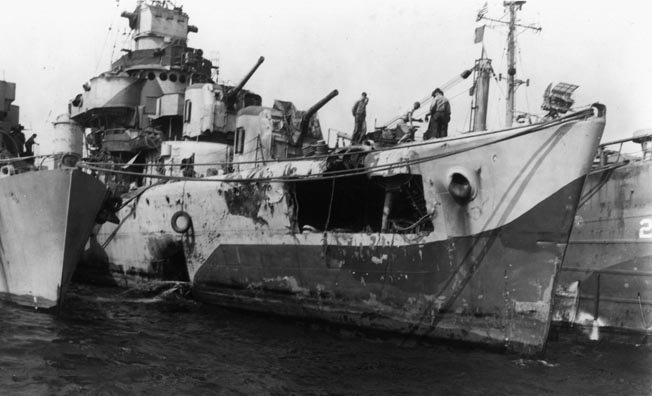
While on antisubmarine patrol, the USS Purdy (Commander Frank L. Johnson) was ordered to go to the assistance of the destroyer USS Mullany, which had been hit by a kamikaze. She arrived to find the Mullany dead in the water, on fire, and abandoned. Minesweepers were rescuing survivors.
Commander Johnson ordered the destroyer-minesweeper USS Gherardi to stand by then called for a tug. Despite a pessimistic report from the ship’s captain, Johnson decided to save the stricken ship and began salvage operations. Eventually the crew of the Mullany reboarded their ship and managed to get her to Kerama Retto under her own power.
Not far away, a task group of six minesweepers under Lt. Cmdr. W.W. McMillen, covered by the destroyer-minesweepers USS Rodman (Commander W.H. Kirvan) and USS Emmons (Lt. Cmdr. Eugene N. Foss), were sweeping a channel between Iheya Retto and Okinawa when a large formation of Japanese planes appeared overhead.
The first plane dove out of the clouds before being detected and hit the Rodman’s forward deck. A bomb exploded under her superstructure, killing 16 men and wounding 20 more. Just as the crew was getting the Rodman’s fires under control, two more kamikazes smashed into her.
Meanwhile, the Emmons was on the way to aid the Rodman when she came under attack. She continued to circle the Rodman, protecting her as best she could with her own antiaircraft guns. The gunners aboard the Emmons were good at their jobs, and one after the other six enemy planes fell to her fire. A combat air patrol of Marine Corps fighters appeared overhead and knocked down some 20 enemy aircraft, aided by the Emmons.
Despite the Marine pilots pressing their attacks even into the antiaircraft fire of the friendly ships, the Emmons was hit by five kamikazes in a row. Her fantail was blown off, taking her rudder with it. The forward gun was smashed, and a huge hole was blown in her forward deck. Another hit under the bridge on the port side knocked out her combat information center. Flames roared throughout the ship. Men jumped overboard to escape the flames. The last plane strafed the ship, killing crewmembers, then plunged into the already wrecked superstructure.
Fires were everywhere, ammunition was exploding, and Emmons developed a 10-degree list. It appeared to be settling aft. But the sprinkler system worked, as did the engines. A sixth kamikaze was shot down by the guns firing in local control. Some of the fires were brought under control. Then the port engine stopped. The senior surviving officer aboard, Lieutenant J.J. Griffin, the gunnery officer, took command.
Work continued until about 7:30 pm when a huge explosion rocked the ship from the ammunition handling room. Lieutenant Griffin ordered the Emmons abandoned.
Although under strafing fire from the surviving enemy planes, the minesweepers bravely went about the business of rescuing survivors. Attempts by other vessels to salvage her failed, and the Emmons went down under the gunfire of friendly ships.
Lieutenant Commander Foss, who had been burned and then blown overboard, spent more than an hour in the water before being rescued by one of the minesweepers. He was completely blind for two weeks but eventually recovered both sight and health. Eight officers and 53 enlisted sailors were killed or missing, and three more officers later died of wounds. Meanwhile the badly damaged USS Rodman managed to reach Kerama Retto under her own power.
And still the Japanese came. One target they could not ignore was the large accumulation of ammunition and fuel ships that were at anchor in the Kerama roadstead. A large group of enemy planes flew toward this tempting target late in the afternoon.
The attack began when LST-447 (Landing Ship, Tank 447, under Lieutenant Paul J. Schmitz) was returning from delivering cargo to the Okinawa beachhead. As LST-447 approached the roadstead, two enemy planes came at her low over the water. Immediately the LST opened fire and hit the leading enemy plane.
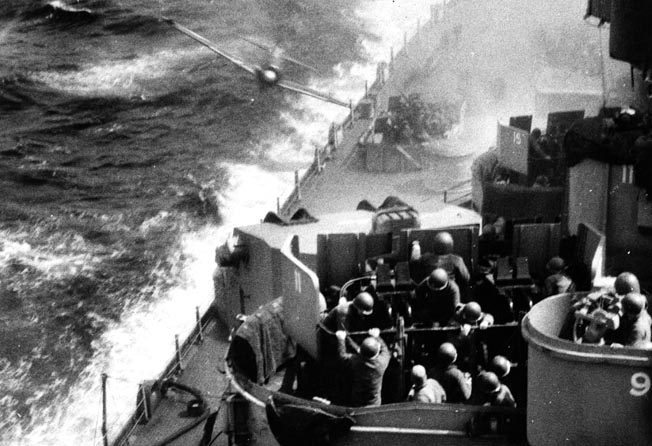
This pilot, evidently believing he had run out of luck, kept coming directly into the fire of the LST. Fire streamed from his tail, and more hits from the LST’s machine guns could be seen ripping into the aircraft. Nevertheless, he managed to hit the ship about two feet above the waterline, and his bomb entered the ship and devastated its interior.
Within 10 minutes such fierce fires engulfed the craft that Lieutenant Schmitz passed the word to abandon ship. With a large amount of diesel oil still aboard, LST-447 burned for 24 hours before she sank. Five men were missing and 17 wounded.
The rest of the Japanese aircraft continued on to the Kerama roadstead. An escort carrier (USS Tulagi) and three ammunition ships were moored just inside the southern entrance of the roadstead. The full attention of the Japanese fell upon these sitting ducks.
The first target was the Tulagi, but the pilot changed his mind and swerved to hit the ammunition ship Logan Victory. Another ammunition ship, the Hobbs Victory, managed to get up steam and leave the harbor, but as she did so a kamikaze crashed the after part of her bridge. Both ships were soon abandoned by their merchant crews, although the naval armed guard remained aboard firing at the attackers.
A third ammunition ship, the Navy-manned Las Vegas Victory (Lt. Cmdr. W.F. Lally), was in the process of discharging ammunition from both sides into a landing craft, small (LCS), an LCT, and two landing craft, medium (LCM) when the Japanese appeared. The Las Vegas Victory managed to shoot down one plane that targeted her, and she was not hit. Abandoned by their crews, the other two ammunition ships were total losses. They drifted, burning and exploding, for more than 24 hours after the raid, when they were sunk by gunfire.
Shortly after 5 pm,a group of LSTs delivering supplies to the beachhead was anchored offshore awaiting its turn to land. This group, under Lt. Cmdr. J.R. Keeling, was spotted by the oncoming kamikazes and attacked. LST-739 was the primary target, but she shot down the lead plane 200 yards from the group. In the next 90 minutes, five more were knocked out of the sky by the group and their escort of minesweepers.
Still more attacks came in during the afternoon. The destroyer escort USS Witter, on antisubmarine patrol, was hit at the waterline by a damaged Aichi D3A Type 99 carrier bomber, killing six and wounding another six. The ship made it back to the United States but was decommissioned as unrepairable.
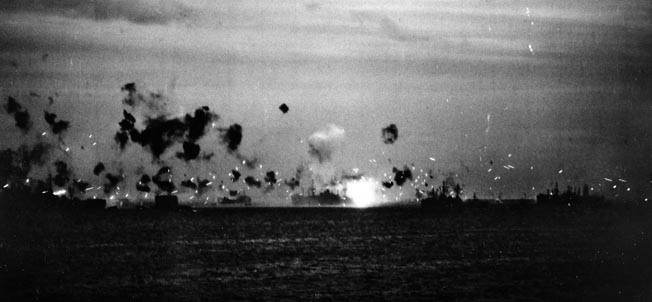
The destroyer USS Morris (Lt. Cmdr. R.V. Wheeler) had stood by the Witter only to become a target herself. A Nakajima B5N Type 97 carrier attack bomber hit the ship high on the port side, blew a hole completely through her, and started fires that took more than two hours to control. Despite being repaired and sent home, the ship was declared “neither seaworthy nor habitable” and decommissioned. Thirteen of her crew had died, and another 45 were wounded in the attack.
The destroyer USS Mullany (Lt. Cmdr. A.R. Drea, USN) was hit by a damaged Nakajima Ki 43 Type 1 fighter plane, which crashed between gun mounts 52 and 53, started fires, and set off stored ammunition and depth charges. The ship was abandoned but assistance from a nearby destroyer and minesweeper brought the fires under control. The ship’s crew reboarded and saved her. Another 30 sailors were dead and 36 wounded, and the Mullany could not be repaired before the war ended.
April 6, 1945, continued badly for the Americans. The Rodman was off the northwest coast of Okinawa when another Nakajima Ki 43 Type 1 fighter plane crashed into its port side. A conventional attack landed a bomb near the bridge. Her loss was 16 killed and 20 wounded. She could not be repaired in time to return to the war. Her partner on patrol, Foss’s Emmons, moved to assist and came under attack.
Although Marine Corps fighter pilots knocked down most of the incoming Japanese planes, at least five enemy planes crashed into the Emmons. The ship was abandoned and later sunk by friendly gunfire. Sixty-four of her crew died, and another 71 were wounded. Other attacks damaged the USS Haynsworth (Commander S.N. Tackney) and Royal Navy aircraft carrier HMS Illustrious (Captain C.E. Lambe).
Admiral Richmond Kelly Turner’s staff later calculated that his Task Force 51 off the coast of Okinawa had been attacked by 182 Japanese planes during April 6, 1945. These planes had attacked in 12 distinct groups. Of this total, Admiral Turner credited 55 planes shot down to the combat air patrols, 35 to ships’ antiaircraft fire, while another 24 crashed into U.S. ships. This total of 108 does not include enemy planes shot down by the aircraft and ships of Task Force 38, which was offshore protecting the beachhead at long range. Task Force 38 claimed to have shot down 249 enemy planes on April 6, 1945, including 136 downed over Okinawa.
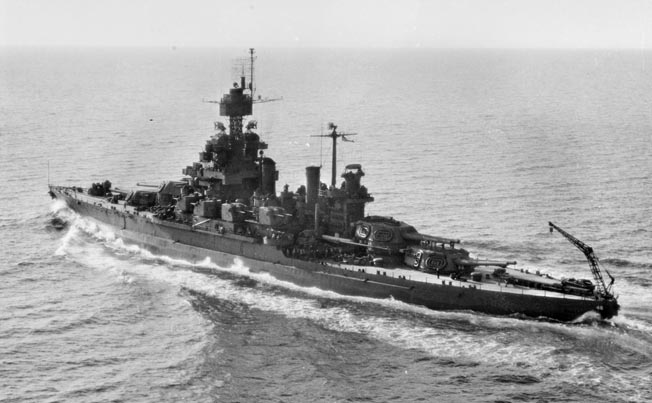
Although it was usual for each side to exaggerate the losses of the other, particularly in aerial combat, the numbers put forth by the Americans in this day’s battle are not far off. The Japanese themselves admitted that 355 kamikaze planes and 341 conventional bombers were dispatched to Okinawa on April 6, 1945. Of these, none of the kamikazes returned home. There are no Japanese figures on losses for the conventional bombers.
American losses were totaled as three destroyers, an LST, and two ammunition ships sunk with cargos, while 10 other ships were damaged, including eight destroyers, a destroyer escort, and a minelayer. The total losses do not, of course, include ships like the Witter, which survived their attacks but were decommissioned as being unrepairable. The Japanese, on the other hand, reported kills of two battleships, three cruisers and another 50 ships sunk with a further 60 damaged.
The Japanese attacks of April 6 spilled over into the next day. A kamikaze crashed into the battleship USS Maryland (Captain J.D. Wilson), a Pearl Harbor survivor, killing 16 men and wounding 37. The radar picket destroyer USS Bennett (Commander J.N. McDonald) was hit by a kamikaze, killing three and wounding 18. She, too, wound up waiting for repairs at Kerama Retto.
That same morning the destroyer escort USS Wesson (Lt. Cmdr. H. Sears) was screening the fleet near Ie Shima when she was attacked by four enemy planes. The fourth came out of a cloud and exploded into her, starting the expected fires and flooding. Although the Wessonl ost power for a while, she eventually made Kerama Retto under her own power. She lost eight killed and 25 wounded.
Although the kamikaze attacks would never completely stop during the Okinawa campaign, the 19 hours between noon of April 6, 1945, and the following morning worried the American naval commanders. Admiral Raymond A. Spruance, commanding U.S. naval forces, praised his men for their efforts at repelling the Japanese, and was quick to notify his commander in chief, Admiral Chester W. Nimitz, that he needed help. The losses in planes and pilots were disturbing, and Spruance was concerned that it could become critical if these attacks continued.
Spruance asked that replacement pilots and planes be expedited to his command even if other obligations in the Pacific had to be reduced accordingly. There was concern that the number of screening ships, destroyers, destroyer escorts, minesweepers, and others, would be dangerously reduced if the attacks continued in such strength. Losses such as those suffered on April 6, 1945, could not be sustained for long.
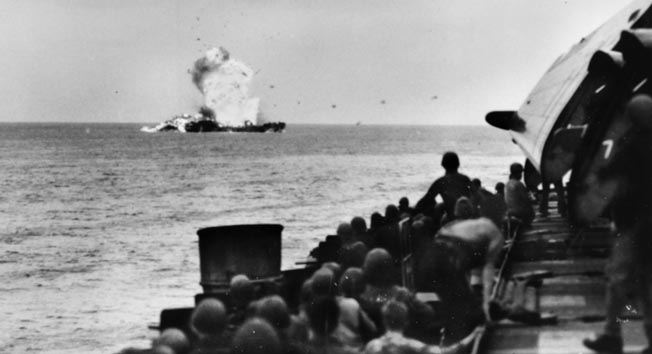
One aspect of Operation Ten-Go that did not particularly disturb the American command was the surface-based kamikaze operation launched in concert with the air strikes. On April 6, the last remaining major warship of the Imperial Japanese Navy set sail for Okinawa. This was the Yamato, the largest battleship in the world at the time. Like her sister ship the Musashi she weighed 62,315 tons with standard load, 69,998 tons fully loaded. The battleship was 863 feet long and 127 feet wide with a draft of 32 feet. She could sail at a speed of 27.5 knots and had a range of over 7,000 nautical miles.
In 1945, the Yamato carried a crew of 3,300. Her greatest threat lay in her armament. She carried the largest weapons ever placed on a battleship, 18.1-inch guns weighing 162 tons and set in triple turrets weighing 2,774 tons. Each gun fired a projectile weighing 3,219 pounds. From these huge guns the Yamato could fire 1.5 rounds per minute.
The Yamato also carried four triple turrets containing 6.1-inch guns, which were intended to augment a weak antiaircraft defense. When these were proven inadequate, two of the turrets were removed. Antiaircraft protection was provided by a dozen 5-inch guns in six twin mounts. There were also two dozen 25mm guns in eight triple mounts and four 13mm machine guns mounted on the bridge tower.
Additional protection was provided by her 16.1-inch-thick vertical and 7.9-inch horizontal armor plate. Theoretically capable of outgunning any ship in the United States Navy, her career thus far had been unremarkable. The Yamato had fought in the Battle of Leyte Gulf, where the Musashi had been sunk by American aircraft. Yamato had sustained only minor damage and made no significant contribution to the battle. Despite taking on 3,000 tons of water and developing a five-degree list, she made it home without difficulty.
The Yamato remained in harbor for the rest of 1944 and into 1945. While in harbor at Kure, on March 19, 1945, she was hit by a single bomb dropped during an American air raid on Japan. Attacks such as this evidently convinced the Japanese that they could not protect the battleship much longer.
Combined with the major attack planned by the Army and Navy Air forces, the surface navy believed that they had to make some contribution to Operation Ten-Go. That contribution was the Yamato and a small fleet of supporting warships.
Grandly titled the Surface Special Attack Force and commanded by Vice Admiral Seiichi Ito, the Yamato (Rear Adm. Kosaku Ariga) set sail on April 6, accompanied by the light cruiser Yahagi (Captain Tameichi Hara) and eight destroyers
The plan was for the ships to attack the American fleet off Okinawa and then to beach themselves and act as an additional artillery battery for the Japanese Army troops on the island. All involved understood that this one-way mission was suicidal. The “fleet” had no air cover and was sailing against an American fleet with dozens of aircraft carriers.
The Japanese warships were quickly spotted by the submarine USS Hackleback (Lt. Cmdr. Frederick E. Janney) off the coast of Kyushu. Steering west-northwest, they left the lighthouse at the southernmost point of Kyushu intending to circle around Task Force 58 and strike Okinawa late on April 7. But with the early warnings of their submarines, the Americans were ready and waiting.
Vice Admiral Marc A. Mitscher commanded Task Force 58’s Fast Carrier Force. Flying his command flag on the carrier USS Bunker Hill (Captain G.A. Seitz), he had no intention of letting the Japanese get that close to either his fleet or the troops on Okinawa. After receiving two submarine contact reports, he ordered all four of his task groups to a launching position northeast of Okinawa. Search planes began scouring the sea for signs of the approaching Japanese.
Shortly after dawn on April 7, a search plane from the carrier USS Essex (Captain C.W. Wieber) found them southwest of Koshiki Retto. Admiral Spruance contacted Admiral Deyo and said that he could attack if he wished. Eager to be in at the kill, Deyo led a force of six battleships, seven cruisers and 21 destroyers toward the enemy, keeping his ships between the Japanese and Okinawa. As he took off to find the enemy, Deyo received word that the aircraft of Task Force 58 had found the enemy and were attacking.
Admiral Mitscher had not waited for Spruance or Deyo. As soon as he was satisfied that he had the position, speed, and course of the enemy, he began dispatching his aircraft to the enemy’s location. Some 280 aircraft, including 98 torpedo bombers, raced north to strike the enemy.
The Yamato opened fire on them shortly after noon on April 7, but the first two American bombs hit the giant battleship at 12:41 pm, and four minutes later the first torpedo slammed into her hull. For the next two hours the Americans unceasingly attacked the dodging battleship and its consorts. The destroyer Hamakaze was hit early and sank first. Soon after, the light cruiser Yahagi was hit by both bombs and torpedoes and went dead in the water.
Five torpedo hits on the port side of the Yamato caused her to slow and begin flooding. More torpedoes hit, and at least 10 bombs blew apart the upper decks. Wireless signals were lost, and flags had to be used. By mid-afternoon she was reduced to a state of complete confusion with her huge guns inoperable because of the list and only a few antiaircraft guns still firing.
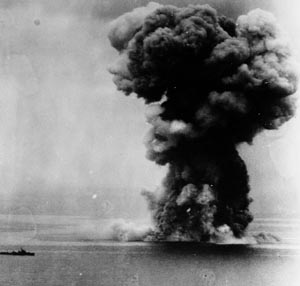
At 2 pm the final attack began. More bombs and torpedoes hit Yamato. The list increased to 35 degrees, and the ship could not maneuver. Twenty minutes later the deck was nearly vertical and the battle flag was touching the waves. A series of internal explosions began.
Finally, at 2:43 pm, the giant battleship Yamato slid beneath the waves. With her went the Yahagi and the destroyers Isokaze, Hamakaze, Asashimo, and Kasumi. Of the Yamato’s crew of 3,200 officers and men, only 23 officers and 246 men were rescued by the surviving destroyers. Another 446 men were lost aboard the Yahagi. Hundreds more perished aboard the destroyers. American losses were 10 planes and 12 men. It was one of the most lopsided victories in American military history.
In terms of permanent ship losses to the U.S. Navy, April 6-7, 1945, would stand as the worst day in its history. At Pearl Harbor the Navy had permanently lost two battleships (USS Arizona and USS Oklahoma), two destroyers (USS Cassin and Downes), and one auxiliary ship (USS Utah). At Okinawa on April 6-7, 1945, it permanently lost 10 warships. Six of these were sunk outright (Bush, Calhoun, Emmons, LST-447, Hobbs Victory, and Logan Victory). Four other ships (Leutze, Morris, Newcomb, and Witter) were so badly damaged that they could not be repaired and were scuttled or decommissioned. Eight ships, including the Mullany and the Defense, suffered major damage and casualties.
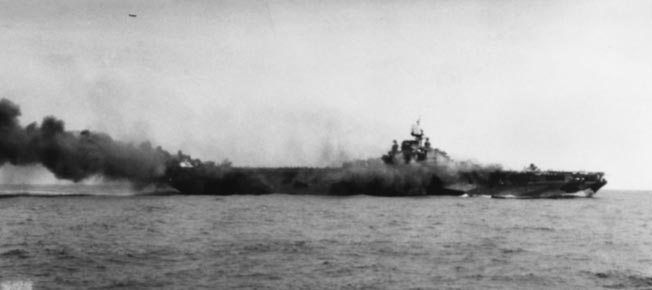
The kamikaze attacks would continue throughout the Battle of Okinawa. Even as the victorious pilots of Task Force 58 celebrated their victory, a kamikaze plane threw itself into the carrier USS Hancock (Captain R.F. Hickey), killing 72 men and wounding 82.
But the crisis had passed with the valiant 19 hours of April 6-7, 1945. The U.S. Navy had come to stay.
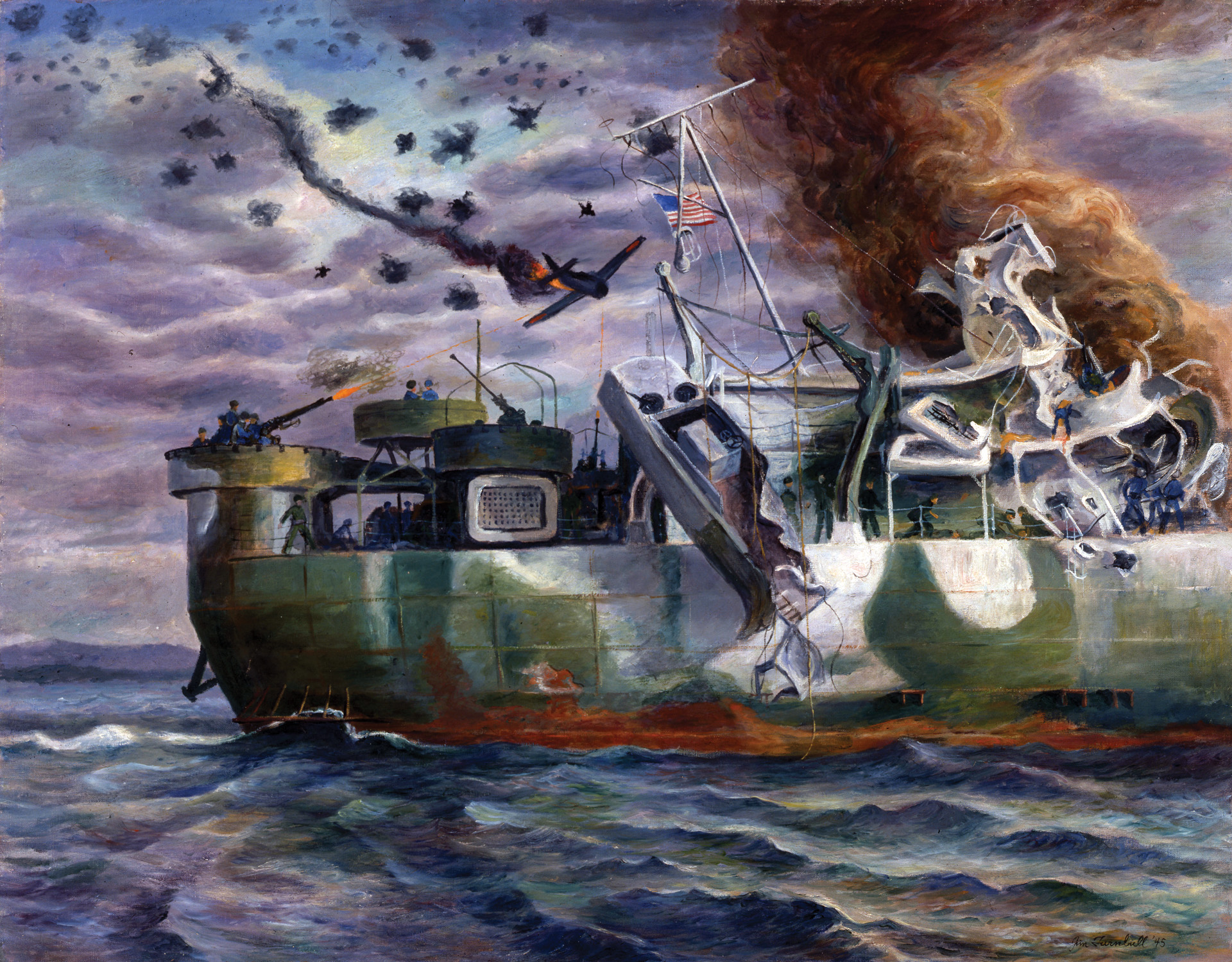

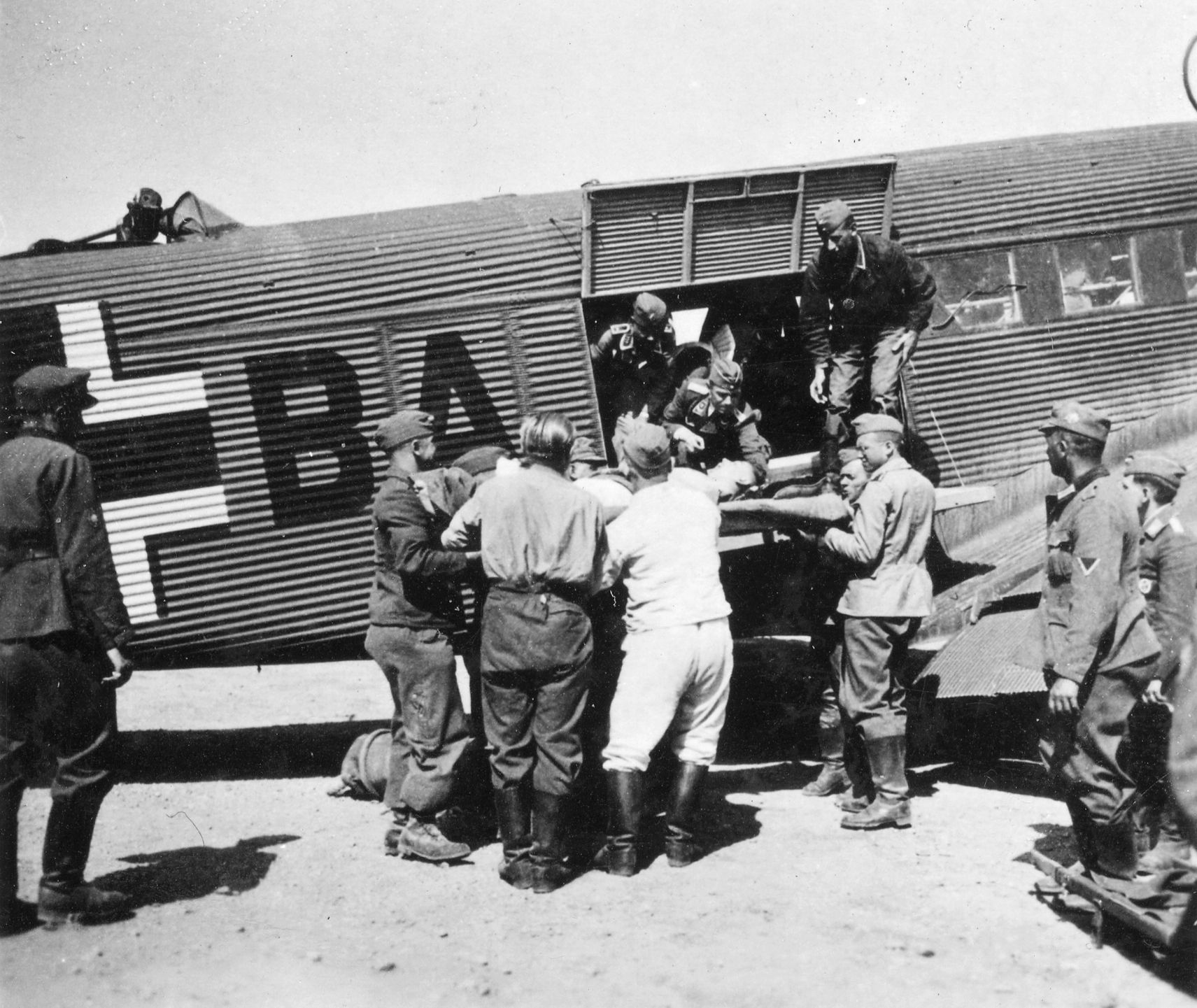
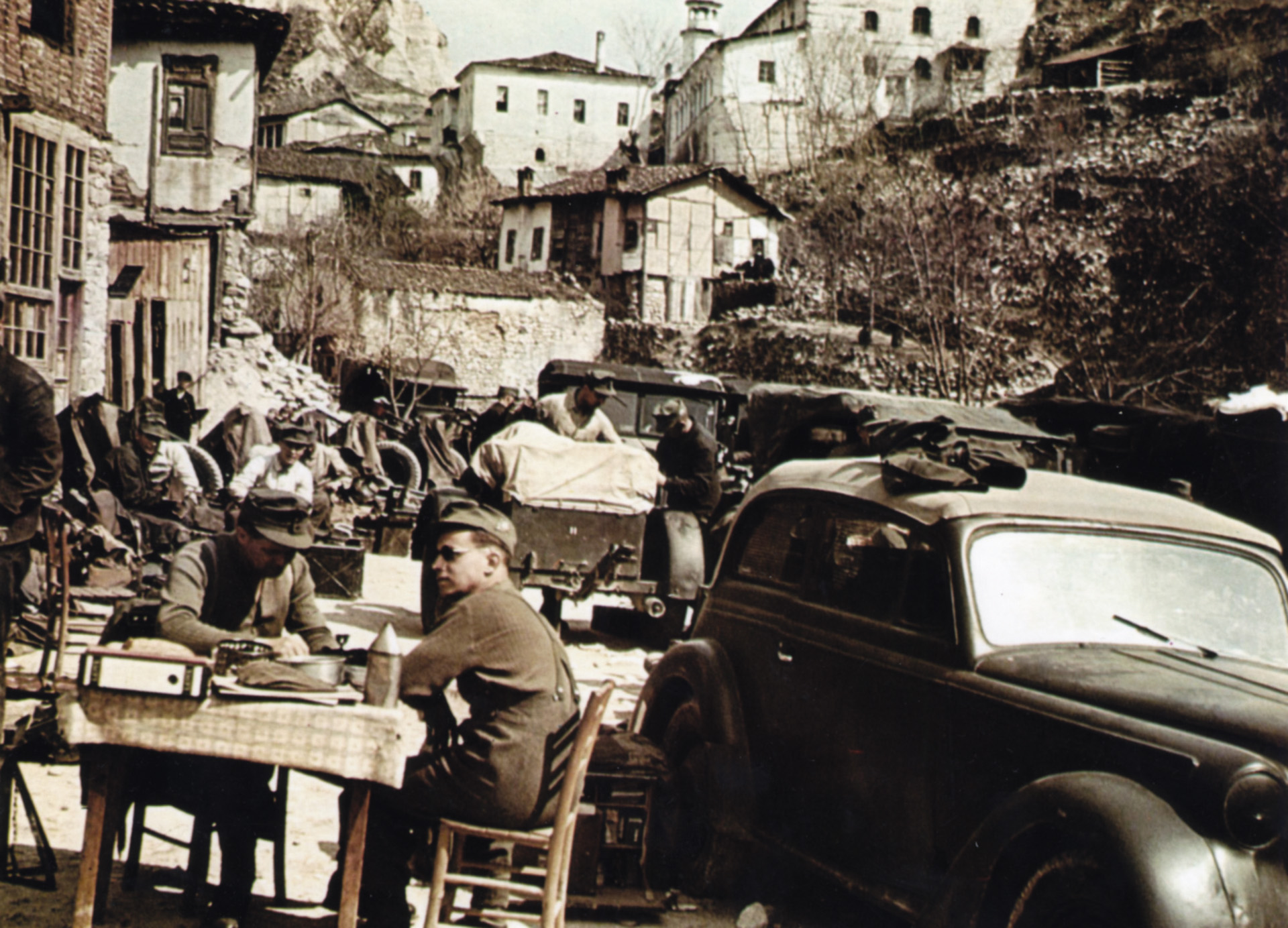
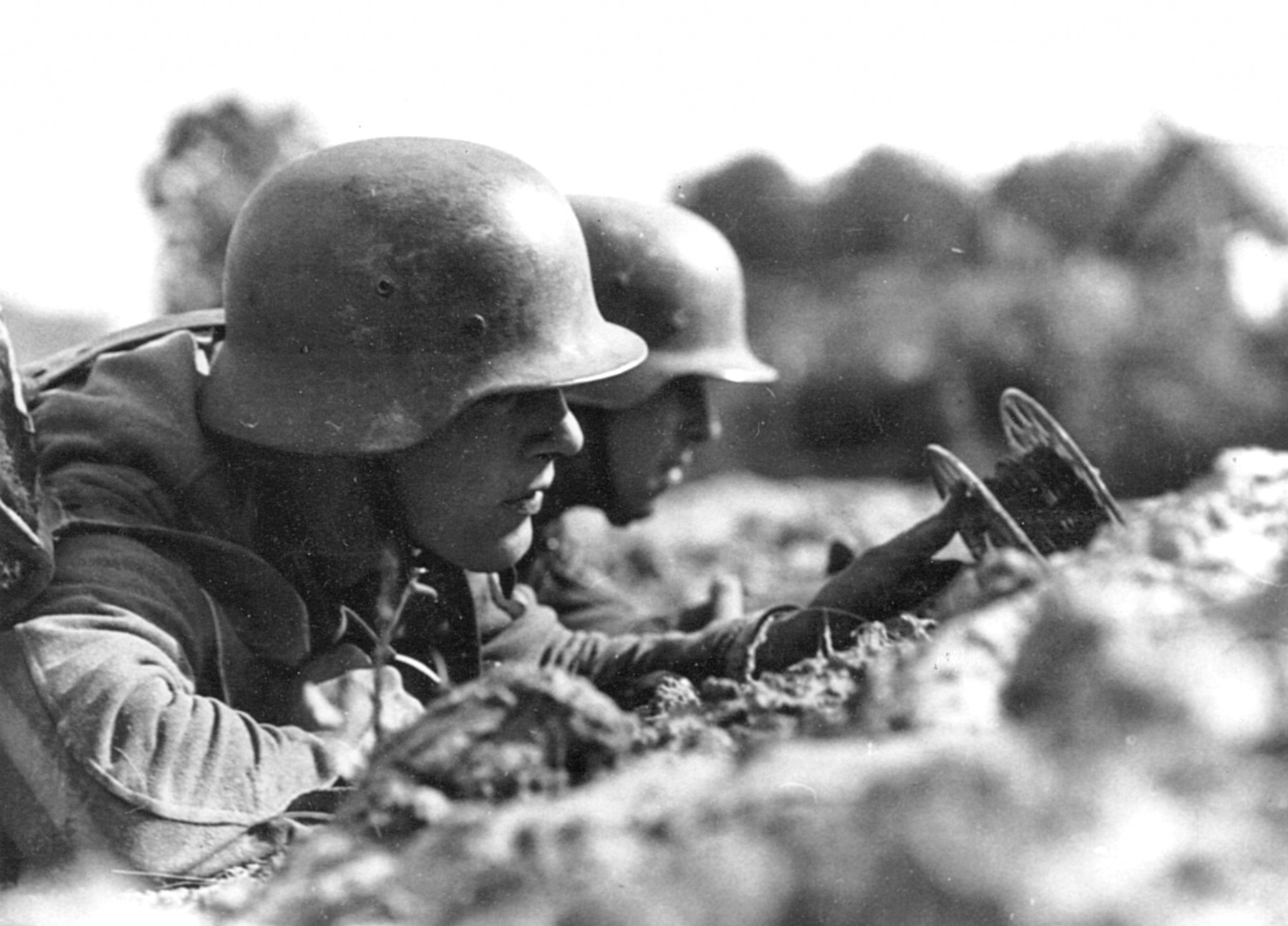
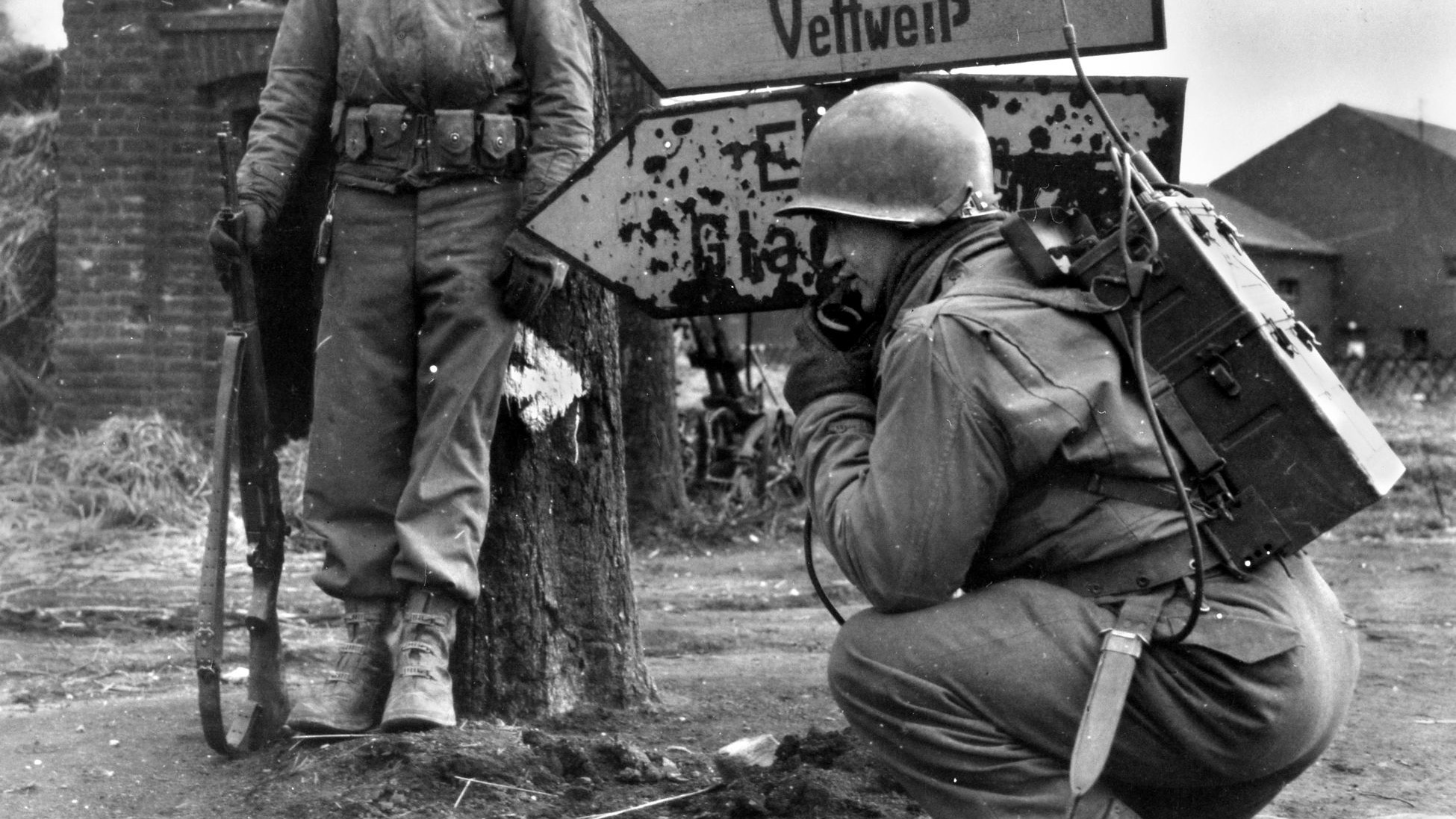
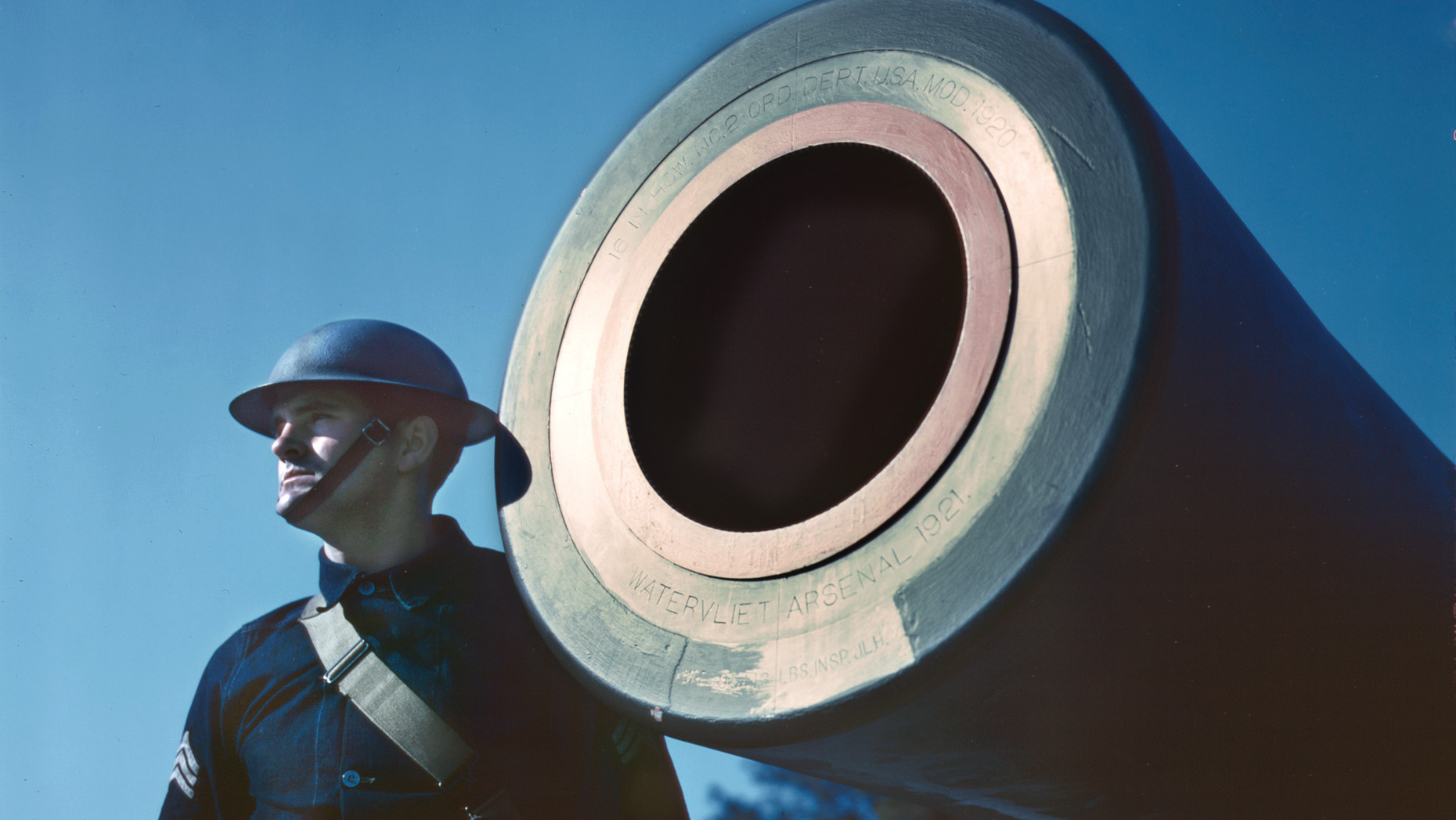
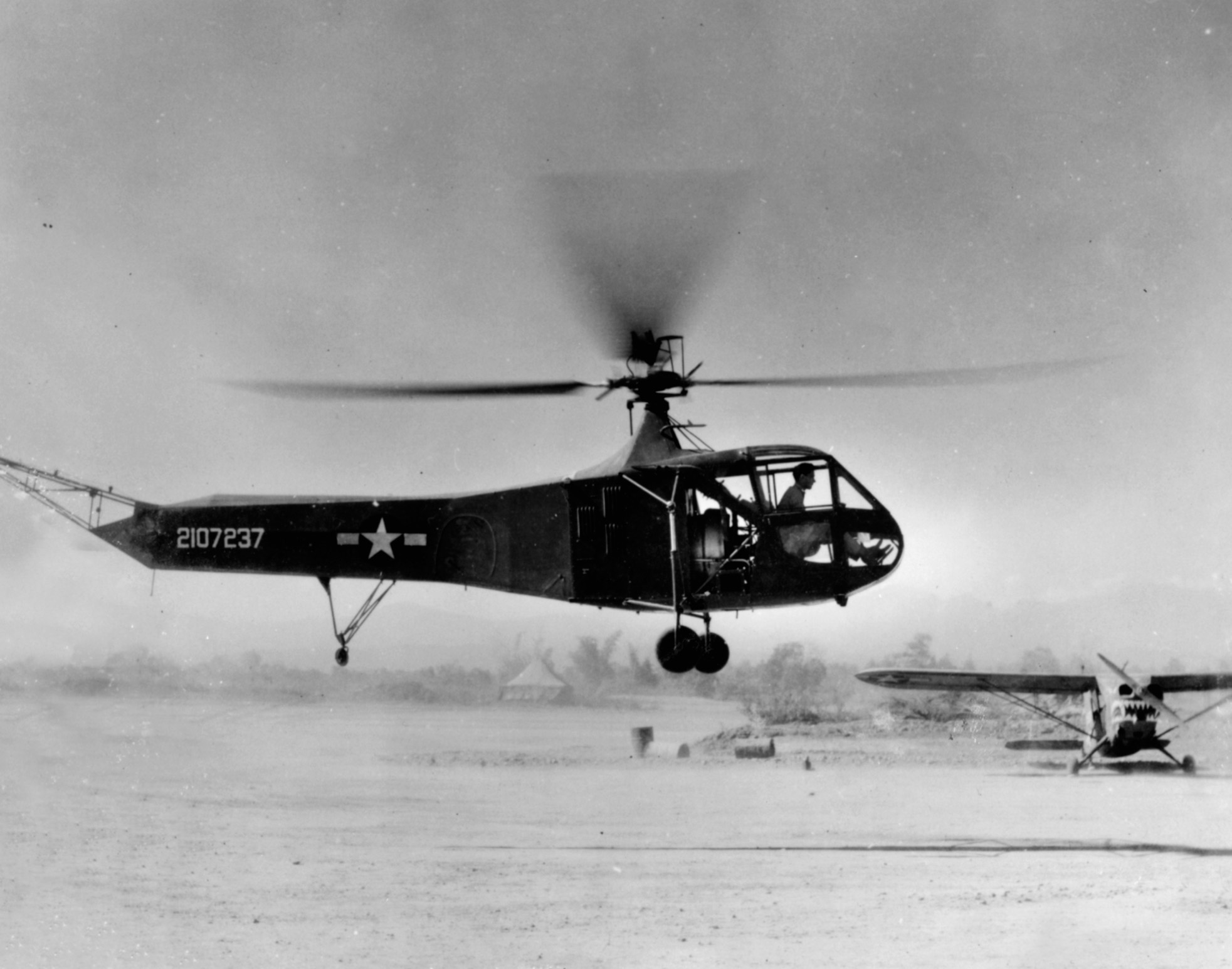

Join The Conversation
Comments
View All Comments